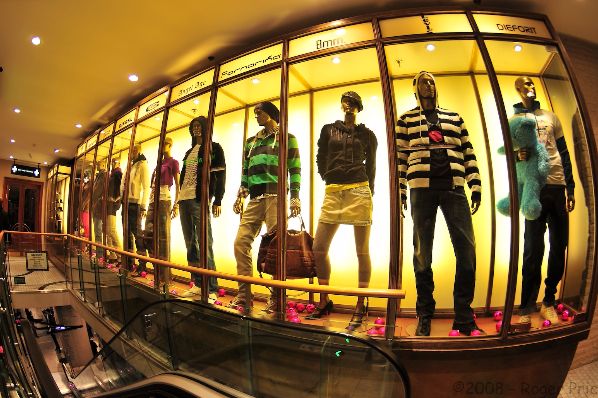At first glance, shopping seems a fairly straightforward activity. The shopper visits a shop, chooses an item from the goods on display, pays, and goes home happy. Not too difficult – and everybody wins.
Is this what I want?
What if the shopper couldn’t find exactly what they wanted – but made do with the second best option as they were in a hurry? They will probably be disappointed – with both the purchase and with the shop. What about the retailer, who might have been able to charge more for the right item, and who may have lost a loyal customer? A reasonable response is to suggest that the retailer should have stocked a wider range of items, providing his customer with more choice. However, this would have caused the shopper to spend more time searching through the new wider range – and they were in a hurry!
Shopping is all about making choices, and choosing requires an individual to process information. The more quickly shoppers can process a display of goods, the faster they will find a suitable item to buy; their chances of making an additional, unplanned purchase also increase. So, how can a retailer organise its stock within the available retail space to help customers find suitable products efficiently? Cognitive psychology has been described as the “study of human mental processes and their role in thinking, feeling and behaviour”. An understanding of these mental processes can be immensely helpful when setting retail strategy and designing retail space. In particular, it is helpful to understand how people pay attention, as attention is a limited resource. and designing retail space. In particular, it is helpful to understand how people pay attention, as attention is a limited resource.
Four steps to design an effective retail space
STEP 1: Organising the space
Organising the space Over time, shoppers develop a “cognitive map” of how they expect different shops to be laid out. This map is based on experience. The cognitive map of a shop we visit regularly will probably be quite accurate; however, we also rely on such maps to navigate unfamiliar stores or find products we buy infrequently. The cognitive map is made up of expectations, especially regarding adjacencies – which groups of products will be nearest each other.
(Effective retail space is arranging products into groups)
By understanding these expectations, we can develop a segmentation strategy – a plan for arranging products into groups and deciding where they are positioned. Segmentation is fundamental to creating a shopper-friendly shop. At total shop level, it enables the retailer to split its total stock into departments and categories. Within categories, it allows the arrangement of individual products into subgroups.
STEP 2: Defining the fiel of interest
People are naturally inquisitive and our subconscious is constantly seeking out items of interest from the world around us. It’s no different in-store, where it is common for the shopper’s eyes to scan from product to product along a shelf or display. There is a danger that shoppers may become distracted and forget to buy the item they came for. Stores can limit this by clearly demarking where categories begin and end. There are many ways of doing this, including the use of hanging point-of-scale to act as ‘bookends’ which re-direct shoppers’ eyes back to the original product of interest.
STEP 3: Prioritise items on display
Attention is a limited resource; it makes sense to think carefully about those items we really want shoppers to see. Just what these special items are will depend on a shop’s retail strategy and brand positioning. A discount shop may want its customers to notice items offering excellent value for money; another shop might want to display items delivering an above margin return. Whatever the policy, the key is to remember that shoppers cannot look at everything, and to think carefully about setting and activating priorities.
STEP 4: Excite and engage
Shoppers are not always rational and can rely on emotions when making a purchase. Happy shoppers buy more. Steps 1 and 2 above are important in creating a positive mind-set. A well-planned display saves time elevates mood, and generally allows the individual to feel they are a ‘savvy shopper’.
(A well-planned display can elevate a shoppers mood)
Placing shoppers in a positive frame of mind can also be achieved by adding levels of theatre to a shop or display; however, this comes with a warning, too much theatre can be confusing and distracting – adding to complexity and making the shopping trip difficult. There is a sweet point where theatre maximises engagement and enjoyment (and therefore propensity to purchase) without causing confusion.
Researching the shopper
Much shopper behaviour is controlled by subconscious processes. An experienced shopper is able to navigate a store and identify products and brands quickly and efficiently, without paying too much attention.
FOR THE FULL STORY PLEASE SEE: Retail Space Europe 2017
Written by
Jan Kristensen, Visuality Group
31 The Calls Leeds, LS2 7EY United Kingdom, T: +44 (0)113 213 4455
www.visuality-group.co.uk















